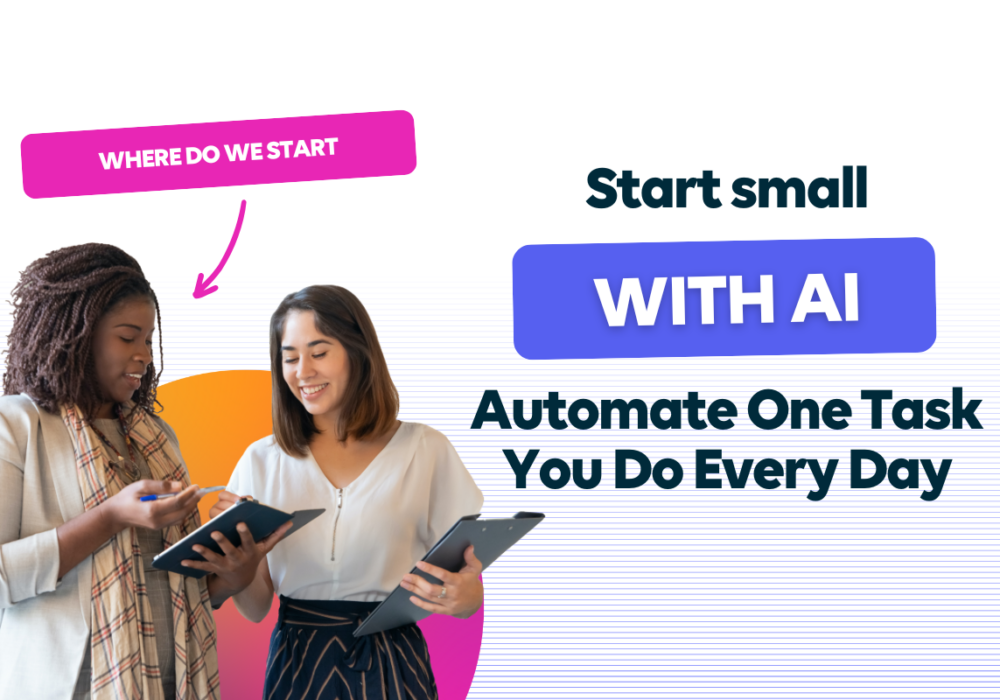Who’s Missing From Your Org Chart? (Hint: They’re Not Human) 🤖
26th November 2024
Last week, we were reviewing our organisational chart when someone asked an intriguing question: “Where should we put Claude?” They weren’t referring to a new hire but to our AI assistant, who had become integral to our content and research operations. This question stopped me in my tracks—not because it was absurd but because it made perfect sense.
The Rise of AI as Team Members
The way we think about AI tools has fundamentally shifted. They’re no longer just passive software waiting to be activated. Modern AI assistants actively participate in daily operations, contribute to discussions, and support decision-making processes (within carefully set parameters, of course). They’ve evolved from being mere tools to becoming active contributors to workplace productivity.
This shift challenges our traditional understanding of organisational structure. When AI creates content, supports research, manages documentation, and facilitates communication across multiple departments, where exactly does it fit in the hierarchy?
Why Traditional Org Charts No Longer Cut It
Adding AI to your org chart isn’t about following a trend – it’s about accurately reflecting how work gets done in modern organisations. Traditional organisational structures face two key challenges when it comes to representing AI:
- First, AI tools typically span multiple departments. A single AI system might assist with legal document review, help draft job descriptions, and support content creation – crossing traditional departmental boundaries effortlessly.
- Second, AI systems often handle coordinator-level responsibilities across various functions. From managing schedules to summarising meetings and maintaining project documentation, these systems perform tasks that traditionally require multiple human roles.
The New Hybrid Org Chart
So, how might organisations represent AI in their structure? Here are some practical approaches:
Create an “AI Systems” layer that intersects with traditional departments, similar to a matrix organisation. This approach helps visualise how AI capabilities cut across vertical department lines and support different teams simultaneously.
Alternatively, integrate AI tools directly into relevant teams, listing them as “AI Associates” with specific capability descriptions. This approach helps teams think more strategically about AI deployment and creates clarity around human-AI collaboration.
The Benefits of Making AI Visible
When organisations formally acknowledge AI’s role in their structure, several advantages emerge:
- Clarity of responsibility: Teams better understand which tasks can be delegated to AI systems and which need human oversight.
- Better resource planning: When AI capabilities are visible in your structure, it becomes easier to identify gaps and overlaps in your technology stack.
- Cultural integration: Listing AI systems alongside human team members helps normalise human-AI collaboration and reduces resistance to adoption.
Getting It Right
If you’re considering updating your org chart to reflect AI’s role, here are some practical tips:
- Start with an audit of where AI is already operating in your organisation
- Document the specific capabilities and limitations of each AI system
- Create clear lines of human oversight and responsibility
- Update your governance structures to include AI systems management
The Human Element Remains Central
Adding AI to your org chart isn’t about replacing humans – it’s about accurately representing how work gets done in your organisation. AI tools are team members with specific capabilities, but they require human colleagues to be truly effective.
Looking Ahead: The Rise of AI Agents
This conversation about AI’s place in our org charts becomes even more relevant as we approach 2025. We’re about to see the emergence of AI agents—autonomous AI systems that can perform complex task sequences with minimal human oversight. Unlike today’s AI assistants, which wait for specific prompts, these agents will proactively manage projects, coordinate with other tools, and even handle decision-making within defined parameters.
Consider the implications: An AI agent might independently manage your social media presence, creating content, analysing performance, adjusting strategies, and coordinating with your human marketing team. Another might handle your customer service inbox, knowing when to resolve issues internally and when to escalate to human team members.
This evolution will make the question of AI’s place in our organisational structures even more pressing. We’ll need to think carefully about how these autonomous agents fit into our reporting structures, how they coordinate with human teams, and what governance frameworks we need to have in place.
Ready to make it official?
After all, your AI assistants are already part of your team. Isn’t it time they got the recognition they deserve?
Ready to give your AI the recognition (and governance) it deserves? Let’s talk. Book a discovery call with Xander Edge, and let’s build an organisation that’s ready for tomorrow.



